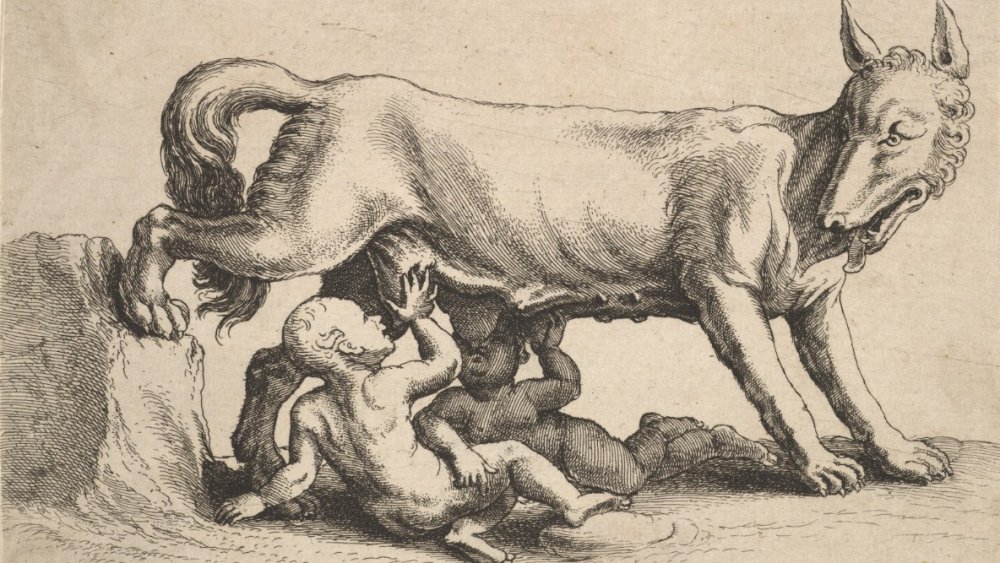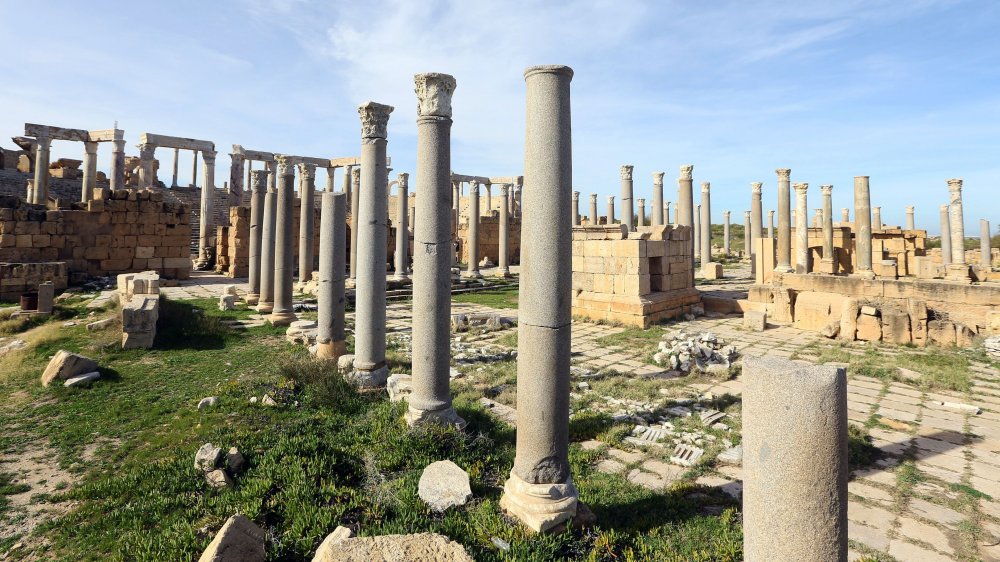We Now Understand Why The Roman Empire Crumbled
Legend has it that twin brothers Romulus and Remus founded the city of Rome, per the Ancient History Encyclopedia. Descendants of the mythical founder of Italy, Aeneas, the double-myth twins were the sons of a Vestal Virgin named Rhea Silvia. Some accounts name Hercules as their father, while others identify their daddy as the god of war, Mars. Silvia's violation of her chastity vow would have typically condemned her and her sons to death, but in a Moses-style rescue, the babies were placed in a basket and set adrift on the Tiber River. A she-wolf discovered the brothers, and instead of using them as food, she fed them, suckling the children. A woodpecker chipped in, too, presumably by regurgitating mashed-up bugs and berries or whatever into the twins' mouths. As adults, the brothers had an ill-fated feud that resulted in Remus's death. Romulus became the first king of Rome, which he named after himself. His mythic connection to the city — and by extension, the empire — was cemented when Virgil's Aeneid was commissioned by Augustus Caesar, the son of Julius Caesar and conqueror of Cleopatra.
So, it's only appropriate that the Roman Empire would end with an emperor named Romulus Augustus. Just 16 years old when Rome fell, via the Ancient History Encyclopedia, Romulus Augustus (also known as Romulus Augustalus) ruled at a time when barbarians attacked the empire like a pack of wolves smelling weakness. However, just as Rome wasn't built in a day, it wasn't destroyed in one, either.
Rome's West side story
Odovacar the barbarian deposed Roman Emperor Romulus Augustus without meeting resistance in 476 CE, says the Ancient History Encyclopedia. The emperor named after Rome's legendary wolf suckler left with his tail between his legs, in a jarring contrast from the glory years of yore. The ancient Romans were roads scholars, masters of the aqueduct, and held PhDs in colosseum construction. They once boasted a grade-A military that effed up opponents far and wide. Where did it go wrong?
In 117 CE, the empire reached the height of its might, writes the Ancient History Encyclopedia, but it kept acquiring new territories. By the third century CE, it had bitten off more of the world than it could chew, spanning "from the British Isles to the Tigris and Euphrates Rivers and into Africa." It had to be split into twin empires: east and west. Much like Romulus and Remus, only one survived.
The division left the empire in a lurch, militarily. It could no longer properly fund an army. A triumphant Goth invasion saw two-thirds or the Roman army decimated at the Battle of Adrianople. Though Goths later forged alliances with the Roman army, a Goth and former Roman commander named Alaric later sacked Rome, according to Biography. Afterward, barbarians smelled blood, and decided to shed it. Plagues and overcrowding exacerbated the strain. The eastern half of the Roman Empire survived as the Byzantine Empire, while the west died a slow, painful death.

